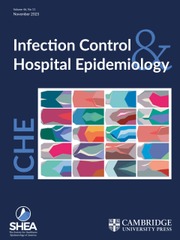No CrossRef data available.
Article contents
Risk factors for healthcare-associated infection among patients hospitalized with COVID-19 infection
Published online by Cambridge University Press: 25 November 2024
Abstract

- Type
- Research Brief
- Information
- Copyright
- © HCA Healthcare, 2024. Published by Cambridge University Press on behalf of The Society for Healthcare Epidemiology of America



